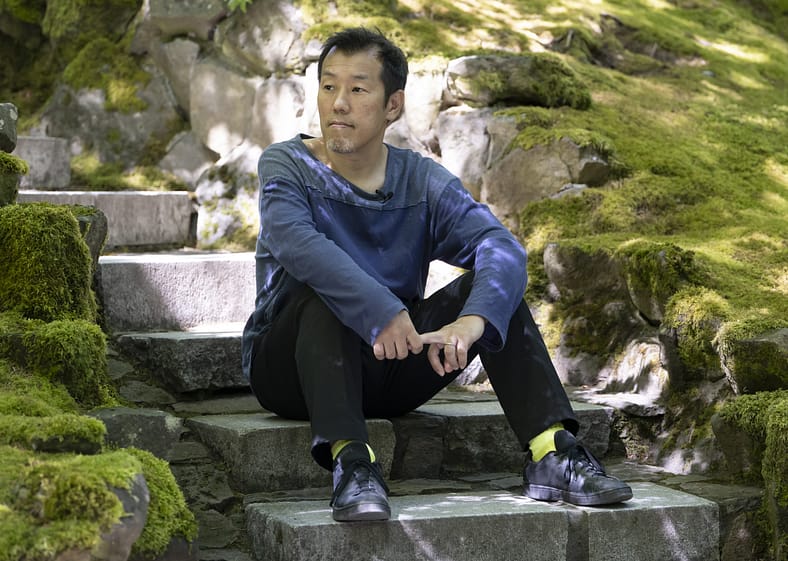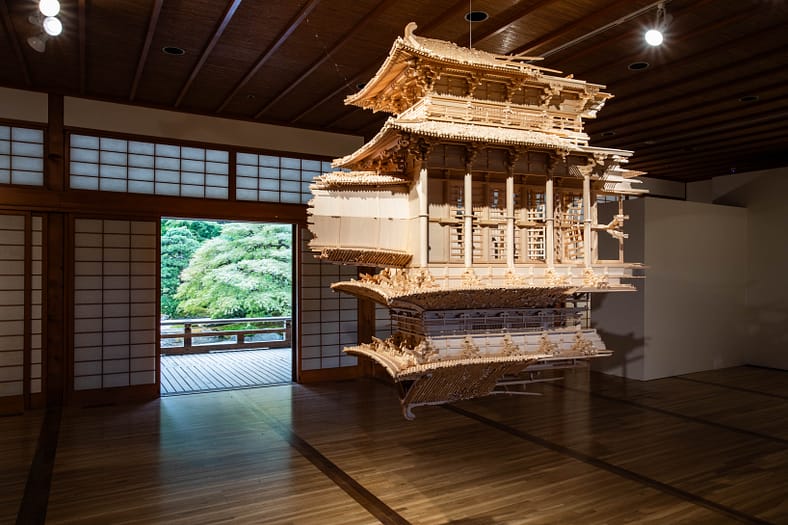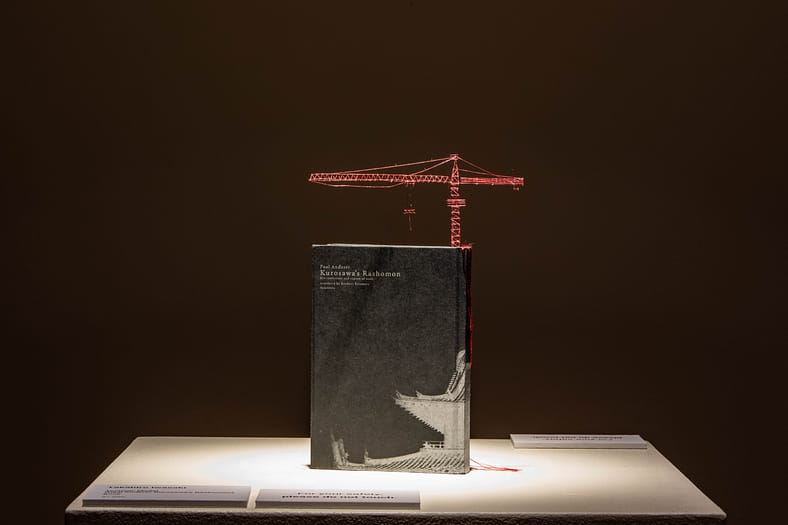
Takahiro Iwasaki admits that when he was first invited to Portland Japanese Garden in 2018 for a research trip ahead of becoming our Artist-in-Residence, he was not expecting much, having only encountered loose interpretations of Japanese landscape design and architectural principles outside of Japan. Yet, Iwasaki recalls setting foot through the Garden’s Antique Gate and feeling transported straight back to Japan. As an artist who finds inspiration in bonsai and ikebana philosophies, he was pleasantly surprised by the Garden’s authenticity and respect for nature. The Hiroshima-based artist also found kinship in the organization’s mission of Inspiring Harmony and Peace, a mindset intimately familiar to him and his hometown. Following the 1945 atomic bombing of Hiroshima, the prefecture capital rebuilt itself as a city of peace. This encouraged Iwasaki to contemplate ways his art could build bridges of understanding that lead to a more peaceful world.

With these thoughts in mind, Iwasaki returned to his Hiroshima studio and set out to create one of his signature Reflection Models, sculptures that pay homage to Japan’s historic architecture and reference the reverential “mirror pond” tradition in Japanese landscape design. Each Reflection Model takes months of dedicated effort to construct, since it is not just one model but two, built to be suspended in air. In September, Iwasaki shipped his long-awaited sculpture from Japan and returned to Portland to debut Reflection Model (Rashomon). His three-week residency was spent creating an expansive sculptural installation for the Calvin and Mayho Tanabe Gallery that represents his understanding of the geography, infrastructure, and local industries that have given a home to Portland Japanese Garden.

Unlike Iwasaki’s other Reflection Models, which are based on shrines and temples still in existence today, Rashomon references the classic 1950 Akira Kurosawa film of the same name*. To Iwasaki, the lasting impact of that image of Kurosawa’s gate represents the initial portal that invited post-war populations to develop a genuine interest in Japanese culture. Within the film, the gate serves as an ominous backdrop to a story of lies and deceit. Yet, Iwasaki believes the film offers a more optimistic ending. In the final scenes, as the torrential rain fades away from the battered gate, the viewer is left imagining a horizon dotted with placid puddles. Puddles that Iwasaki knows from experience, capture the inverted reflection of the gate. A reflection that hints at a new perspective, a sense of hope about the future on the other side.

* Portland Japanese Garden cautions potential viewers of Akira Kurosawa’s Rashomon to be cognizant of the gender inequities and dismissive portrayal of the nameless samurai’s wife. Part of Rashomon’s lasting influence is in how it perpetuates stereotypes about women, and discredits female voices, experiences, and testimonies while upholding the “conventional wisdom” of conservative patriarchal society. Alongside its cultural impact and cinematographic beauty, the film has been described as “unsettling” and “disturbing.” Takahiro Iwasaki, our featured artist, used the image of rashomon purely as a lasting cultural metaphor and did not intend his work to be a validation of the specific content of Kurosawa’s film.
Iwasaki’s exhibition Nature of Perception will be on display through December 4, 2023.